Mauritia eglantina (Duclos, 1833)
Eglantine
cowry, 34-80mm
Mauritia eglantina prefers
lagoon reef habitats at depths about 1.5 to 14m, but they can be found on deeper
lagoon bottom shipwrecks. They are most common under rocks in shallow water
along the lagoon side of the east reef, in relatively quiet waters protected
from typical wind chop by reefs or islands. The shell can be very difficult
to distinguish from Mauritia
arabica. Mauritia eglantina tends to be more cylindrical,
while M. arabica is still cylindrical, but a bit more oval in outline.
The edge between the sides and the base tend to be sharper and more angular
in M. arabica. These characteristics, however, are variable and there
are specimens that are very difficult to place. One characteristic often relied
upon is the presence of a dark blotch on the spire end of the shell in Mauritia
eglantina that is not present in M. arabica. One of the best ways
to differentiate them is by where they are found. While Mauritia eglantina
prefers quiet lagoon habitats, M. arabica is usually found intertidally
or on shallow windward reefs where there is some water movement. Mauritia
eglantina is a Pacific species, ranging from eastern Polynesia and Micronesia
westward to Southeast Asia and Indonesia and including northern Australia.
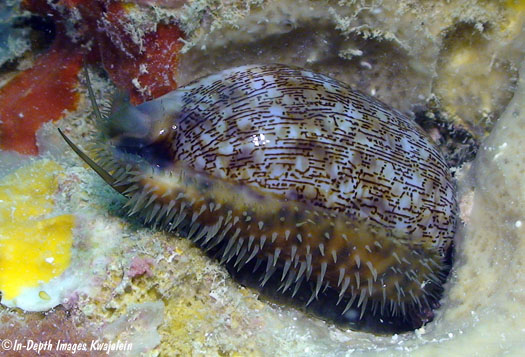
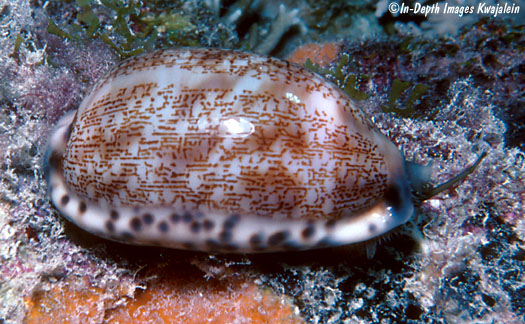
Several Mauritia eglantina hide in a hole on the underside of an overturned
rock.
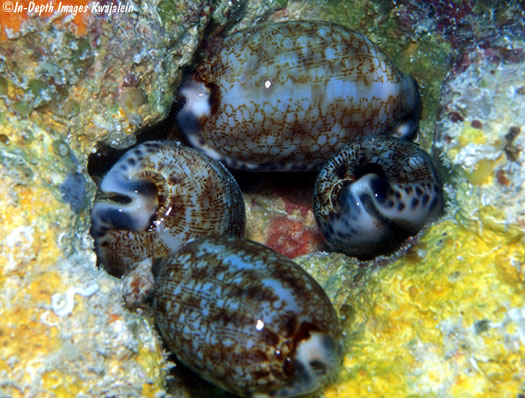
The pink egg mass below appears
to be recently deposited.
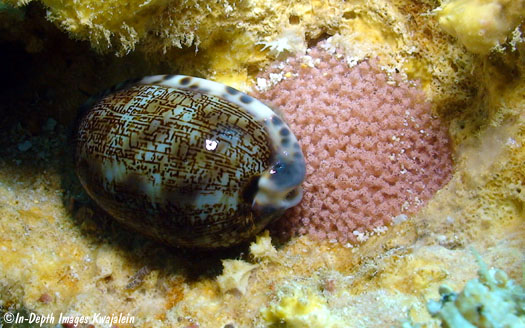
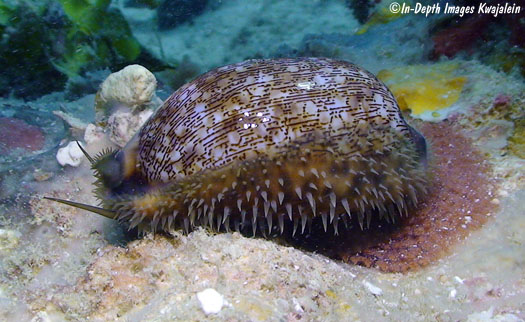
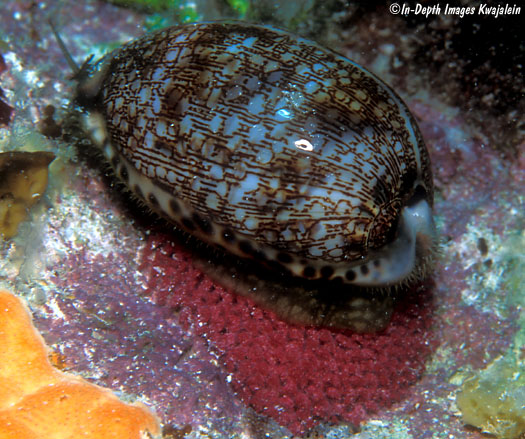
As the eggs age, they darken. The
ones below are probably ready to hatch out.
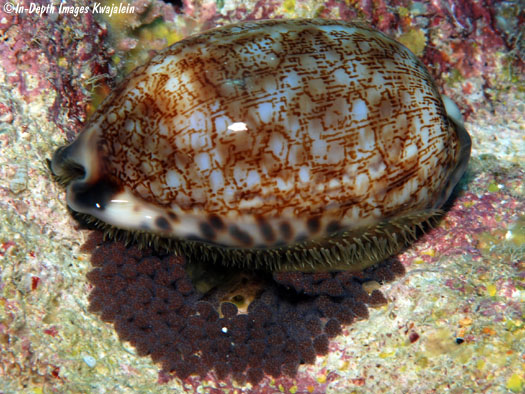
Juvenile specimens of all the Mauritia species have the pattern shown
below. Juveniles are often difficult to tell apart. Sometimes the only way is
to guess which species one is by where is was found.
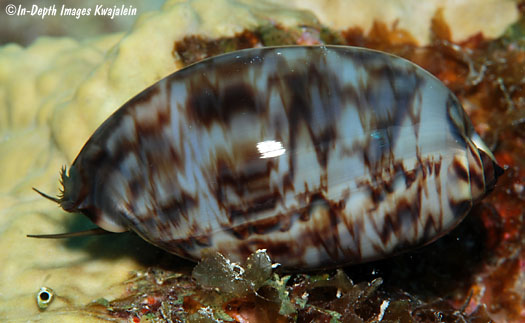
The animal below is younger.
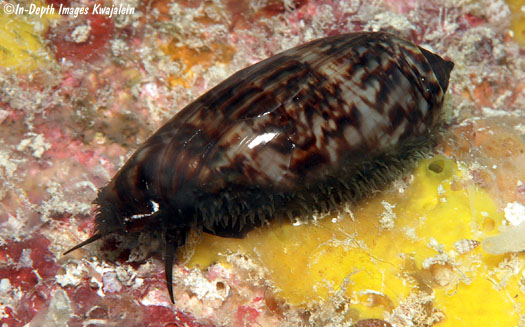
64.4mm, 1973
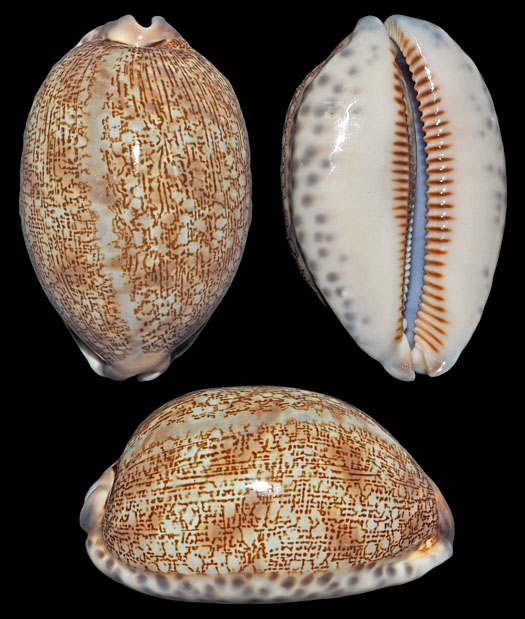
A
dark blotch at the posterior end (between the upper and lower white reflections
from the camera's lighting) helps differentiate this species from Mauritia
arabica.
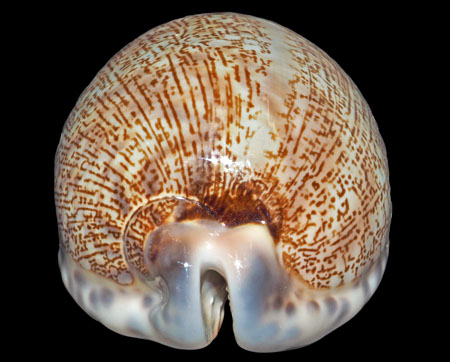
Sometimes specimens living on steel
shipwrecks incorporate rust into their shells. 52.1mm, 1972
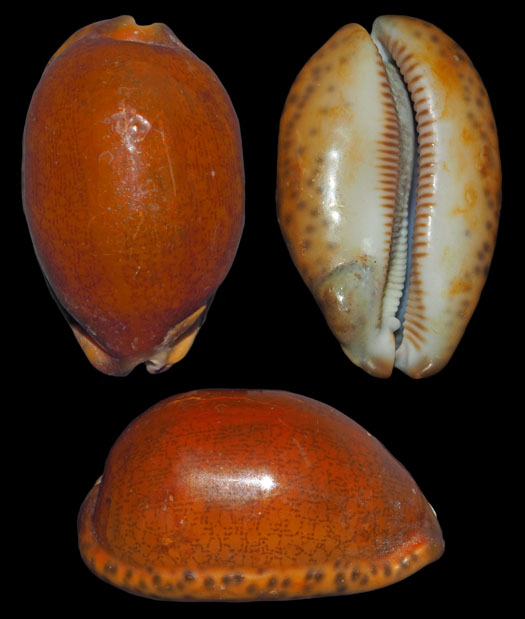
50.0mm, 1973

70.75mm, May 1973

Created
1 April 2008
Updated 2 April 2024
Back to
cowries
Kwajalein Underwater Home














